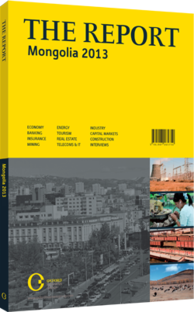OBG talks to Ch. Ulaan, Minister of Finance

Interview: Ch. Ulaan
In what way are measures being taken to reduce fiscal spending and curb inflation?
CH. ULAAN: One key measure to lower inflation is to reduce fiscal spending and expenditure. Financed by the lump sum of mining revenue, fiscal spending has increased sharply, as have social welfare benefits, leading to rising inflation, motivated by demand. However, fiscal expenditure has yet to be curbed in line with the fall of revenue generated by the sector. National debt has thus risen, while private sector finances have shrunk.
One mechanism to correct these cyclical errors is the fiscal rule, approved by the state budget sustainability law. These regulations aim to reduce the impact of fiscal expenditure on the macro economy. For instance, from the beginning of the 2013 fiscal year, budgetary restraints imposed included a stipulation that fiscal loss should not be more than 2% of GDP, the percentage of total expenditure growth rate for the year should not exceed either the percentage of GDP from non-mining activities or the average rate of GDP growth from the non-mining sector of the last 12 years.
As a result, the expansion of budget expenditure is restrained and a certain portion of revenue from mining resources is being accumulated into sustainability fund, a tool that had previously been missing. This has given us possibilities to revise the social welfare benefit programme and redirect it to more targeted segments. Moreover, in cooperation with Mongol Bank we are taking measures to decelerate the price of some seasonal products that affect inflation. We also aim to stabilise prices and to increase reserves for petroleum products and boost meat supply, in addition to improve the availability of seasonal products.
How can the tax system be reformed to boost revenue and reduce informal economic activity?
ULAAN: Recent significant reforms include reducing the tax burden, promoting foreign investment, supporting economic growth, expanding the channels of budget revenue and improving sustainability. Further, as a result of the reduction of economic entity income tax and value-added tax, total revenue increased 2.9 times, and average GDP growth rose from 9.9% in 2008 to 17.3% in 2011. To boost revenue, the newly formed government has targeted policy at extending the tax base rather than just increasing the tax rate. It has also simplified the methods of paying taxes. The tax office has applied e-technology to their operations, which allows them to assess non-registered business sectors in the shadow economy, while also developing information exchange among governmental organisations.
What initiatives are in place to encourage local entrepreneurship, promote growth of small and medium-sized enterprises (SME), and boost employment?
ULAAN: Among the measures the government is adopting are encouraging local entrepreneurship, reducing red tape, eliminating the number of special licences for entrepreneurs by 50%, adopting new financial mechanisms, facilitating foreign aid and loans, and developing tools for public-private partnerships. Beyond that, the government granted soft loans to SMEs through the Japanese Government. Further, the Sustainable Livelihood-II programme, which is financed by loans from the World Bank, aims to create more jobs and reduce poverty among Mongolians.
Furthermore, we are acting as a guarantor for SMEs that are not able to supply financial evidence and similar documents to gain access to financial mediums. The parliament approved the Law of Grantor Fund in February 2012 to support local entrepreneurs, SMEs and to facilitate job creation opportunities.
The Mongolian Development Bank has also made an agreement of “mutual understanding on general conditions to finance projects” with the Ministry of Industry, Agriculture and Light Industry. As a result, initial stages to grant 20-year, interest-free loans worth MNT50bn ($36,000) to some 5000 SMEs have taken place. The total approximate cost of 7.34% per annum is going to be paid from the Mongolian state budget.
You have reached the limit of premium articles you can view for free.
Choose from the options below to purchase print or digital editions of our Reports. You can also purchase a website subscription giving you unlimited access to all of our Reports online for 12 months.
If you have already purchased this Report or have a website subscription, please login to continue.

